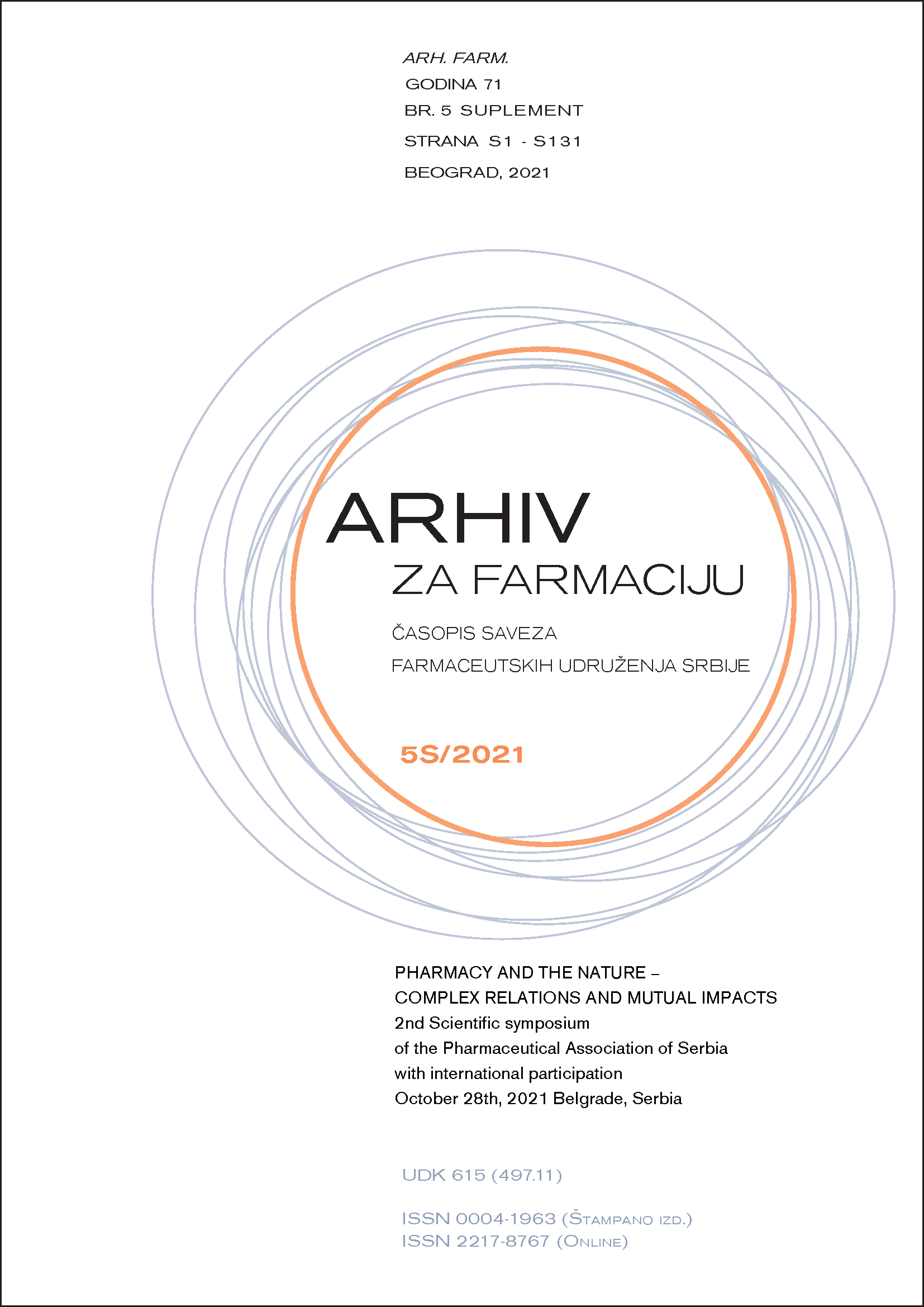NEW STRATEGIES IN THE DEVELOPMENT OF ECOLOGICALLY FRIENDLY RP-HPLC METHODS BASED ON THE CHARGED AEROSOL DETECTOR
Abstract
Qualitative and quantitative assessment of drug substances and drug dosage forms is of utmost importance for the quality control in pharmaceutical industry. Among the analytical techniques available, high performance liquid chromatography (HPLC) stands out due to its high efficiency and robustness. But, HPLC is also characterized by high consumption of toxic organic solvents used both for method development and routine analyses. These solvents could harmfully impact the environment and human health. Therefore, various strategies are developing for attracting eco-friendly character to HPLC. Recently introduced green chromatography concept is based on the 3R rule (Reduce – Replace – Recycle) implying the HPLC method development governed by the decreased use of acetonitrile labeled as the most commonly used HPLC solvent and its replacement with ethanol or acetone (1). However, these greener alternatives are known for their high UV absorbtion cut-off values making them unsuitable for common UV/VIS detection. As appropriate solvent compatible solution, the use of Corona Charged Aerosol Detector (CAD) is proposed. CAD is recognized as a universal detector providing persistent mass sensitive analyte response independent of chemical structure (no need for UV/VIS chromofores or ionization ability). The detection principle involves the nebulization of chromatographic mobile phase, the evaporation of aerosol droplets and finally the production of charged analyte particles (2). Assuming that chromatographic behavior and CAD generated responses of analytes could be affected by various mobile phase related factors and/or detector parameters settings, design of experiments (DoE) supported HPLC-CAD method development was performed for the analysis of antipsychotic drug risperidone in presence of its impurities. By carefully planning the number and the order of performing experiments, DoE methodology enables investigation of significance effects of multiple factor effects together with their factor interactions. Different experimental settings involving variation of organic solvent type and content in range 15-25% (V/V), mobile phase flow rate (0.50-1.00 mL min-1) and column temperature (25-50 °C) were examined in accordance with Box-Behnken design and selectivity factor between adjacent peaks on the chromatogram was measured. The optimal conditions were defined applying mucticriteria decision making approach by means of Derringer desirability function evaluation. Optimal separations were achieved using 20% (V/V) of ethanol in mobile phase flowing at 0.6 mL min-1 under 37.5 °C column temperature, while in case of acetone, optimum comprised 17% (V/V) of organic modifier, 0.8 mL min-1 and 37.5 °C. Finally, eco-friendly character of both methods was rated by Green Analytical Procedure Index, GAPI (3).

